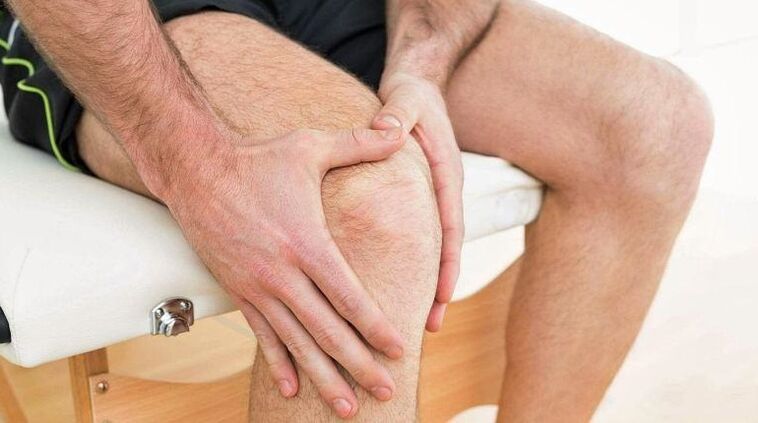
Every person experiences pain in the knee joint from time to time. This may be the result of a sudden movement or a symptom of a progressive pathology. The knee joint is the largest and anatomically complex component of the musculoskeletal system. It accounts for 80% of physical weight, leading to increased physical activity and risk of injury. The large number of capillaries, nerve fibers, and muscle tissue makes every injury, even the smallest, extremely painful. Damaged nerves cause an infectious-inflammatory process accompanied by swelling, discoloration of the skin, and an increase in local temperature.
As progress progresses, the joint itself, the intraarticular fluid, and the connective tissues become abnormal, which can have serious consequences - the development of arthritic diseases. A general knowledge of the anatomical structure of the knee joint will help you understand which element can cause pain and what measures should be taken to eliminate the pain.
Anatomical structure
The anterior zone of the joint is the patella, in a simpler language - the patella. The thigh is connected to a quadriceps muscle, which continues in the patella ligament and usually forms a ligament consisting of the following types of fascia:
- Loin branches (small and large);
- rear support nodes - sickle-shaped, back, middle and side;
- transverse and transverse ligaments of the knee joint.
The cruciate ligaments are most susceptible to injury - sharp movement, high rotation, and subluxation fall lead to rupture of the interminimal joints.
The tapes can be divided into two types:
- Their anterior function is to stabilize the ankle joint, especially to prevent excessive forward movement. They originate in the posterior part of the large femur, intersect with the posterior ligaments in the knee cavity, and are connected to the incision between the anterior protrusions of the tibia.
- Rear - Prevents the lower leg from retracting. They start from the anterior upper part of the femur, pass through the joint cavity, and end between the dorsal protrusions of the tibia.
There is cartilage on the surface of the joint bones. At the junction of the tibia and femur, there are meniscuses - a kind of joint lining that acts as a shock-absorbing and stabilizing role.
There are several joint bags (three to five) in the knee joint that provide natural lubrication:
- above the kneecap;
- popliteal deep;
- between the tendons in the long thigh muscle;
- hypodermic patella;
- in the recess below the knee joint.
Thanks to the knee, a person can perform steps, bends and stretches within the limits indicated by the strips.
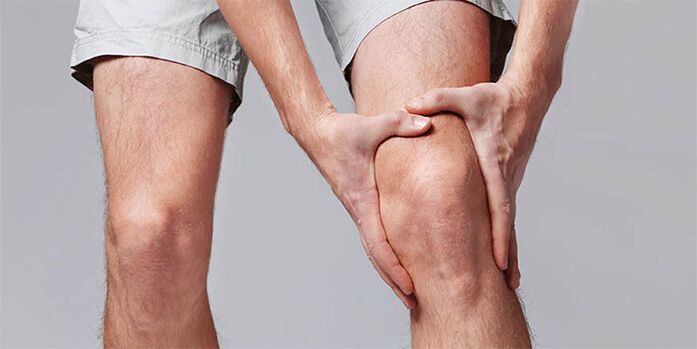
Causes of pain
Inflammation can develop in the following structures:
- cartilage;
- joint sheath;
- joint fluid;
- tibia bones;
- the muscles and tendons surrounding the joint;
- ligament devices;
- blood vessels, veins, arteries;
- subcutaneous fat;
- epidermis.
The most common causes of knee pain are:
- Osteoarthritis is the cause of more than 50% of knee pains. It is characterized by the slow, gradual destruction of hyaline cartilage. It can be asymptomatic for a long time and can worsen sharply in the second stage. Knee pain occurs due to growing osteophytes that affect nerve endings;
- Arthritis is an inflammatory pathology that occurs in an acute form. It can be an independent disease - a complication of spondylitis, or other joint pathologies - arthrosis, rheumatism, etc. Arthritis is characterized by intense pain accompanied by swelling and redness;
- Osteochondritis - articular cartilage inflamed over time with degenerative arthrosis with mechanical damage;
- Periarthritis is a disease that occurs in the background of obesity (more common in women). The pathology affects the tendons and muscles and then passes into the shell of the knee joint. The pain is moderate, pulling (like a sprain).
- The formation of chondromatosis nodes in the tissue of the hyaline cartilage that eventually spread to the capsule of the knee joint. In this case, the soft tissue is pinched by a large number of nerve cells. Because of this, the knee is constantly sore, even at rest.
- Bursitis - the synovial capsule of the knee joint rarely becomes inflamed, only complications of injuries or side diseases, hence the pain.
- Cellulite - fatty tissue under the skin can only cause pain in tightly concentrated foci of concomitant diseases. Purulent arthritis, soft abscess can cause inflammatory and painful processes in the protective layer.
- Dermatitis - affects the epidermis in infectious pathologies (eczema, erysipelas, psoriasis) or allergic reactions to external stimuli.
- Osteomyelitis - the bone marrow is inflamed due to bacteria that have entered the jelly-like body along with the lymph flow. It can also be a complication of open injuries or surgery.
- Synovitis - the knee joint capsule is most commonly affected in people over 55 years of age due to rheumatism or other chronic pathologies. You can get sick at a young age due to a serious injury.
Types of pain depending on the location
Diseases that cause negative processes are also a type of pain:
- Intense, unbearable pain - reactive arthritis, rupture of meniscus and tendons, bursitis in the acute stage;
- Tolerable but persistent pain - arthritis, initial bursitis;
- Hip pain - gonarthrosis, arthrosis;
- Vibrating - degenerative arthrosis, in the stage of joint deformity;
- Acute, burning pain - compression of the sciatic nerve, bone tuberculosis;
- Stinging - osteoporosis, progression of synovial sac inflammation, exacerbation of chronic meniscus injury;
- Cramps - inflammation of the soft tissues of the knee joint, muscles and tendons;
- Shot pain - damage to the nerve roots.
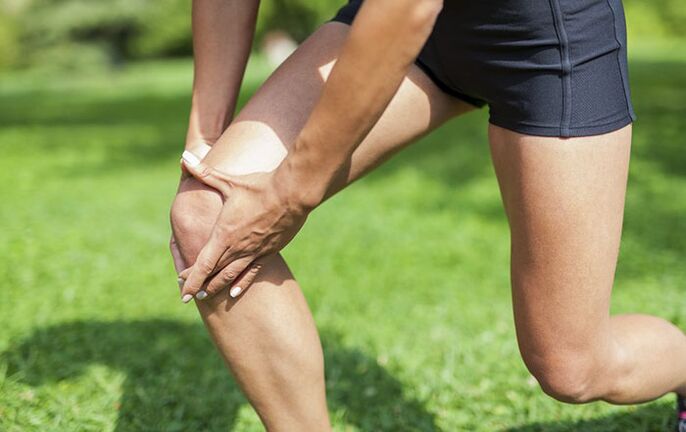
Diagnostic measures
If you experience intense pain in your knee joints, don’t delay your visit to the doctor in the hope that "everything will go away". Early diagnosis ensures successful treatment and prevents the development of more severe processes that can cause irreparable damage to health and quality of life. You should contact a therapist for the first consultation. After a routine examination, you decide to prescribe treatment (which occurs in 70% of knee pain complaints) or prescribe a comprehensive laboratory and hardware examination involving highly trained professionals.
Running, suspicious pain is examined in different directions:
- Traumatology: If arthrosis, congenital or acquired dysplasia, joint fracture, dislocation, displacement, radiography, MRI, ultrasound, fluid biopsy in the synovial sac are suspected, the source of the knee pain originates.
- Surgery: subarachnoid cyst, thrombosis, arthritis with purulent formations, tendon ruptures, meniscus, ligaments, intra-articular stones, hemarthrosis, diagnosis of abscesses with ultrasound, fluoroscopy, CT or MRI, general examination of blood, rheumatoid arthritisin the knee joint, etc.
- Rheumatology: systemic diseases (lupus erythematosus, rheumatoid arthritis, gout) are excluded by laboratory tests. Complete blood count, hematology, rheumatoid protein, DNA test, uric acid levels.
- Neurology and psychiatry: sciatica does not require long diagnosis. Muscle tone and inflammatory sites will be visible on ultrasound. In the case of mental disorders, when the pain in the knee joint is not confirmed by any fact, but the patient is still excruciating (so-called somatic pain), special tests for mental disorders are prescribed.
Basic diagnostic methods
The most popular ways to quickly and accurately diagnose knee pain are:
- X-ray - allows the knee joint to be viewed in multiple projections and the location of the injury to be determined. The images show lesions in the early stages, especially the appearance of bone, joint sac, or osteophytes.
- Ultrasound examination - state-of-the-art, high-precision examination determines the thickness of the joint shell, the condition of the ligament structure, the presence of any type of inflammation, and general changes in the knee.
- Dopplerography - Examination of veins and arteries for aneurysms, plaques and occlusions. It quickly and effectively determines the percentage of potential risks and the condition of the inner wall of blood vessels.
- MRI is currently the most accurate way to diagnose. It allows you to see a clear, three-dimensional image of the knee joint, pathological changes in the synovial fluid, even a slight deformation of the bone tissue, and so on. It is rarely prescribed for many due to its high cost and contraindications. Investigation of patients with implants, metal prostheses and weighing more than 150 kg is prohibited.
- CT - the principle of operation is based on X-rays, only in a more modern way. The images are taken in a circular projection, which allows us to get a more accurate picture of the knee joint and thus determine the nature and extent of the lesion.
- Angiography is a method of examining vascular patency by injecting contrast fluid. It determines the functioning of metabolic processes and allows the early diagnosis of joint failure.
- Complete blood count - prescribed to identify inflammation and pain. The set of indicators may be traced to certain diseases and may identify joint pathologies only at the beginning of progression.
- Blood from rheumatoid antibodies - also indicates the presence of inflammation but is specific, systemic or hereditary. For example, this analysis is used to make a diagnosis of rheumatoid arthritis.
- Uric acid is an important test in determining the causes of pain and the stage of exacerbation of gout or infectious arthritis. Elevated levels indicate the accumulation of salt deposits in the joints.
- Wasserman reaction - suspected sexual infections, syphilis, gonorrhea, chlamydia, etc. prescribed. The development of joint diseases as a background or complication of certain diseases is very common. Therefore, a positive test allows prescribing appropriate treatment, taking into account the type of infection.
- Tumor markers - help identify special substances in the blood that are secreted by cancer or metastases. Thus, synovial sac sarcoma is characterized by the presence of markers of vimentin, cellular external antigen, and pancytokeratin.
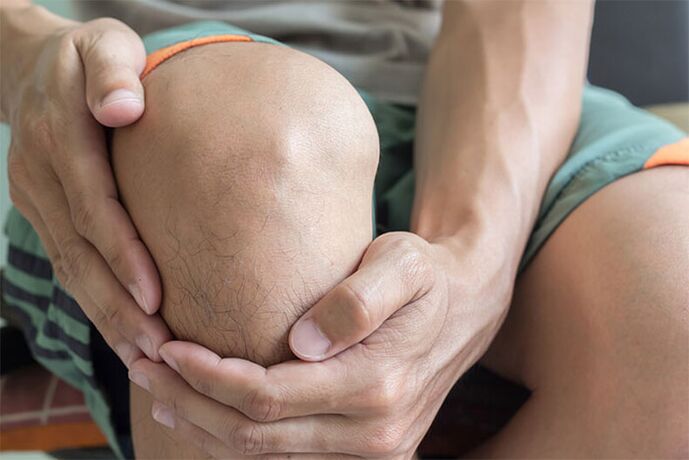
Treatment of pain in the knee joints
Knee pain can be divided into those that require emergency medical attention. And the ones that were pre-diagnosed. Urgent conditions include any injury, fracture, dislocation, abscess, purulent inflammation, hemarthrosis (joint bleeding). The symptoms are the same in all cases - unbearable pain, swelling, redness, immobility, knee fever and feverish condition.
Treatment is limited to primary care until the ambulance arrives:
- the leg should be raised - put a rolled roller or hard pad;
- put a bandage of ice on your knees and replace every 5-10 minutes;
- take an available painkiller.
In all other cases, treatment will be given after comprehensive investigations have been performed and the causes established. Based on the anamnesis, medication, physiotherapy, movement therapy, massage, homeopathic treatment, topical application, spa holidays and, in extreme cases, surgery may be prescribed.
Conservative therapy
Traditional drug treatments for pain include the following groups of drugs:
- Anesthetics. You can take simple over-the-counter painkillers to relieve your initial symptoms and relieve your pain. In severe cases involving loss of mobility and unbearable pain, more serious medications are needed that are only prescribed by a doctor and are available by prescription.
- NSAIDs. Helps quickly relieve inflammation and swelling.
- Chondroprotectors. Modern drugs ensure the regeneration of cartilage tissue despite the long time of administration. The effect is cumulative and long-lasting (joint pain should not be disturbed for up to 10 years after six months of treatment and should be treated at an early stage).
- Glucocorticosteroids. It is indicated for the reduction of cortisol hormone production and arrest of disease progression in patients with autoimmune pathology. Dosages and treatment regimens are prescribed by your doctor on a strictly individual basis.
- Immunosuppressants. They suppress the dysfunction of the defense system, thereby stabilizing the progression of dangerous diseases such as rheumatoid arthritis, lupus erythematosus, and vasculitis. They are rarely prescribed, except for an accurate diagnosis and an inability to eliminate knee pain in any other way.
- Hyaluronic acid injections. It is injected directly into the cavity of the knee joint and eliminates pain and lack of joint fluid. They also help to restore hyaline cartilage, thereby restoring knee mobility.
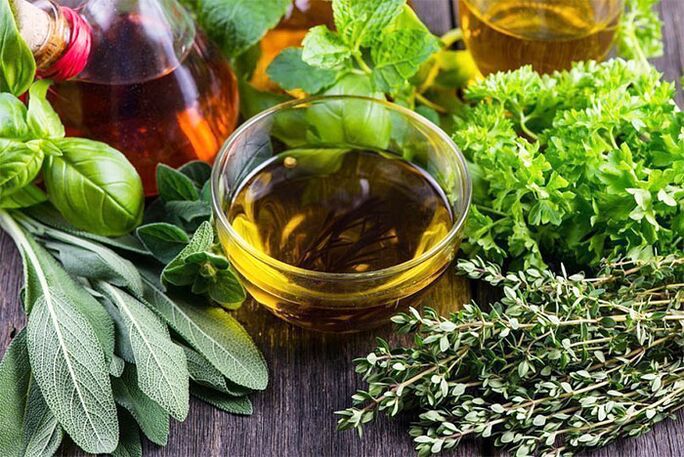
Folk recipes
Most people who begin to feel pain in the knee joint try folk methods to eliminate the discomfort. You can use body-based ointments or tinctures to make body lotions, compresses and night-time applications. A decoction of herbs, alcoholic tinctures for topical use, helps prevent a period of exacerbation and relieves obsessive pain.
The following plants and substances have anti-inflammatory effects:
- Coltsfoot;
- St. John's wort;
- oak bark;
- Burdock root;
- Bay leaves;
- Chamomile flowers;
- Calls marigold;
- White and black kaolin clay;
- Salt and soda solution;
- Honey products.
For example, mix 10 previously crushed aspirins and a glass of liquid honey. Apply a thick layer to the knee in the area where the pain is localized. Cover with foil and wrap in woolen fabric (scarf), preferably left overnight. The pain disappears after the first application.
In the same way, you can apply clay where there is pain. A little olive oil is added to the mixture of clay and water to prevent the skin from hardening and tightening.
An effective recipe that contains honey, salt and soda. Mix 1 teaspoon of salt and soda with honey in sufficient quantity to cover the knee joint. This method performs three operations at once - it removes excess fluid, relieves inflammation and pain, and enriches it with nutrients.
Oak bark in the form of a decoction or alcoholic tincture strengthens the blood vessels well, promotes normal blood circulation. To decoction pour 1 tablespoon dried crust with 1 cup boiled water, cook in water bath for 20 minutes. Soak the gauze in a decoction and apply it to the knee in a warm (not hot) form for 30-50 minutes to relieve knee pain. For alcoholic tincture, use the same proportions, just replace the water with vodka. Stick in a dark, cool place for 10-14 days. Apply the same way.
By alternating different tools and methods, you can preserve the disease for a long time, forgetting the pain and swelling. The effectiveness of alternative medicine, despite the elimination of the primary symptoms - knee pain - has not been proven.
Massage and therapeutic exercises for knee pain
Comprehensive traditional treatment necessarily includes exercise and massage. The exercises are recommended for any person who has had or has a knee injury, is diagnosed with arthritis, arthritis, and other arthritic diseases, is engaged in an inactive lifestyle (sedentary work, disability in groups 1-2, housewives, etc. ).
The tournament can be done independently, at a slow pace and in a feasible mode. Gradually increase the number of exercises or, conversely, decrease them, depending on how you feel.
- From a supine position or sitting on a chair, slowly bend and bend your legs until you feel a slight fatigue.
- Bend your leg in your knee, perform rotating movements with a small amplitude, repeat the same on the second leg.
- Lying on your back, gently pull your legs bent at your knees towards your stomach.
- Put a pillow on the chair and sit down with your legs "hanging", making circular movements clockwise and vice versa.
- Sitting in a chair, slowly stretch your leg and hold it in this position for 2-5 seconds, lower it just as slowly, repeat on the second leg.
- Stand up straight, straighten your back, slowly bend your legs to your knees and stay in the "boom" position for a few seconds. If possible, increase the delay time every 2 days.
- If there are no contraindications and health permits, it can complicate the complex. Put the gym stick to the maximum level that can be achieved with your feet bent at the knees. Throw your foot over the "barrier" 10-15 times, then change position.
- The small complex for stretching the lower leg also contributes to the rapid recovery of the knee joint. Bend your palms against the wall, bend your right leg to your knees, put your left leg back. The legs rest completely on the floor. Hold the pose for 30 seconds. Replace your leg.
Performing a simple exercise available to any person on a regular basis gives visible results within a month - the pain in the knee joint disappears, the mobility of the joints improves, the swelling disappears.
The effectiveness of the tournament is greatly increased when combined with a massage course. It can also be a traditional exposure method and manual pain therapy. It is only to be remembered that only experienced professionals with good recommendations should be entrusted with such procedures. Otherwise, manual manipulations will have the slightest effect at best, cause joint displacement at worst, and exacerbate the condition. The massage should be performed at regular intervals, up to 10 times a month, for 25-30 minutes. Daily procedures are strictly contraindicated. There should be no pain in the knee during the session. If you feel uncomfortable, stop the procedure.
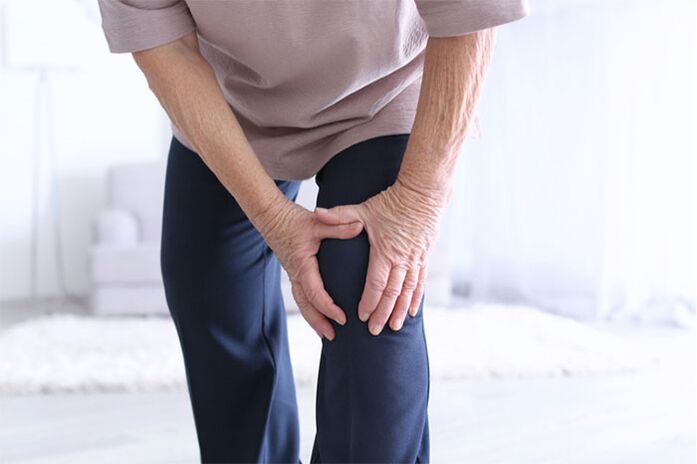
Treatment at home
Treatment of knee pain at home is a prerequisite for outpatient therapy. The patient should assist himself in all possible ways to relieve pain and recover as quickly as possible.
Therefore, for this purpose, some rules should be followed to treat all types of pain:
- Follow all the recommendations of your doctor - do not miss the prescribed medications, do feasible gymnastics, come to physiotherapy on time.
- Review your diet. Add lots of fresh vegetables, herbs and fruits to your diet. Excludes fatty meats, fried foods and semi-finished products.
- If necessary, use aids to relieve the load on the knee joint - a stick, crutch and other special tools.
- Do not use prescriptions of traditional medicine, even proven and neighbors, without prior medical consultation. What helps one person is categorically contraindicated for the other.
- During treatment, avoid physical activity if possible and provide bed rest so that pain does not return (with the exception of therapeutic exercises).
- Provide a comfortable place to sleep and relax - orthopedic mattresses, comfortable chairs and armchairs, preferably with small stands to comfortably lift your aching legs.
- Light self-massage is allowed. Caressing and rubbing promotes blood circulation, thereby enriching the tissues with oxygen. This will make the muscle cramps go away and the pain will be less intense.
Preventive measures
It is almost impossible to completely insure against the injury, sprain, or displacement of the most stressed joint in the body. Everyday life obliges you to do housework, go to work, and so on. In the normal course of business, you may very well suffer an unexpected injury. But reducing the risk of developing joint disease is the responsibility of all people. Leading rheumatologists have developed a number of recommendations to help protect yourself from dangerous pathologies:
- Establishment and strict adherence to a rational system - work-rest. This is especially true for people whose activities involve increased physical activity (athletes, builders, salespeople, metallurgists, miners, etc. ).
- Timely treatment and rehabilitation of communicable diseases. This rule even applies to "harmless" people such as acute respiratory infections or seasonal SARS.
- Avoid exposure to low temperatures and drafts. Dress according to the weather to prevent hypothermia.
- At the age of 35, treatment with chondroprotectors is desirable.
- Watch your weight carefully. Increasing body weight inevitably increases the load on the knee, this is worth noting when consuming another bun.
- Follow the principles of a healthy diet to maintain a normal weight. More vegetables and dairy products - less sweet, spicy, salty, fatty and starchy foods.
- Rethink your lifestyle - quitting smoking, alcohol and other toxic addictions will have a positive effect not only on your knee joints but also on your life in general. You can turn to your relatives for help in overcoming addictions - the difficult phase passes much faster and easier.
Everyone, regardless of age, gender, or social status, experienced pain in their knee joints. From the first steps, the joint is subjected to all kinds of examinations - falls, bruises, injuries, sports, hypothermia. Nevertheless, many people manage to maintain the mobility, health, and functionality of the parent compound into old age.























